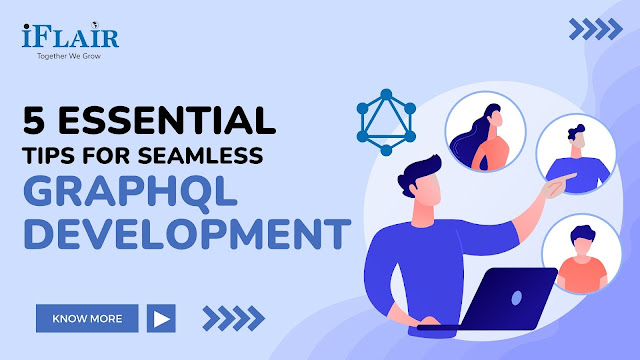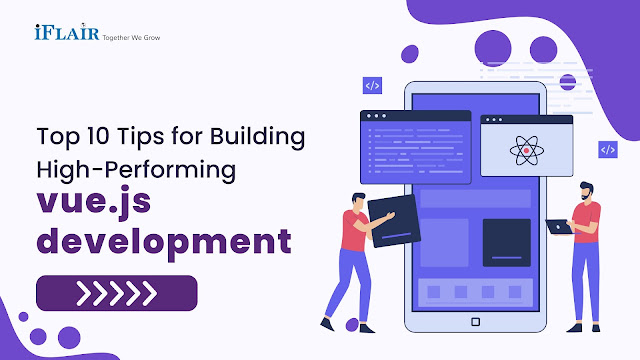5 Essential Tips for Seamless GraphQL Development
In the ever-evolving landscape of web development, GraphQL has emerged as a powerful tool for building efficient APIs. Whether you're a Graphql development company or an individual developer, mastering GraphQL can significantly enhance your ability to create scalable and flexible applications. However, like any technology, there are nuances to be aware of to ensure smooth development. In this blog post, we'll delve into five essential tips to streamline your GraphQL development process, benefiting both Graphql development companies and developers alike.
Tip 1: Plan Your Schema Carefully -
At the heart of GraphQL development lies the schema, which defines the structure of your API and dictates how clients can interact with it. A well-thought-out schema is crucial for building robust and maintainable APIs. Before diving into coding, take the time to carefully plan your schema. Consider the data requirements of your application and design a schema that reflects these needs efficiently. Moreover, anticipate future changes and design your schema to be extensible. By investing time in schema planning upfront, Graphql Development Company and developers can avoid headaches down the line when modifying or scaling their APIs.
Tip 2: Optimize Query Performance -
One of the key advantages of GraphQL is its ability to fetch precisely the data clients need with a single query. However, inefficient queries can impact performance, leading to slow response times and increased server load. To mitigate these issues, focus on optimizing query performance. Utilize features like pagination and caching to reduce the amount of data transferred over the network and minimize server load. Additionally, leverage GraphQL's built-in tools, such as query complexity analysis, to identify and address potentially expensive queries. By prioritizing query performance, Graphql developers and development companies can ensure a smooth and responsive user experience.
Tip 3: Implement Error Handling and Validation -
Error handling is a critical aspect of any API development, and GraphQL is no exception. Properly handling errors ensures that clients receive meaningful feedback when something goes wrong, enhancing the overall usability of your API. Implement robust error handling and validation mechanisms in your GraphQL server to catch and respond to errors effectively. Utilize GraphQL's error type system to communicate detailed error messages to clients, helping them diagnose and resolve issues quickly. Additionally, validate input data to enforce business rules and prevent malformed requests from reaching your application logic. By prioritizing error handling and validation, Graphql development companies and developers can build reliable and user-friendly APIs.
Tip 4: Secure Your GraphQL API -
Security is paramount in web development, and GraphQL APIs are no exception. As GraphQL adoption continues to grow, so too do the security threats targeting GraphQL APIs. Protect your GraphQL API from common vulnerabilities such as injection attacks, unauthorized access, and data exposure. Implement authentication and authorization mechanisms to control access to your API and enforce user permissions. Additionally, sanitize input data to prevent malicious code from reaching your server and utilize HTTPS to encrypt data in transit. Regularly audit your GraphQL API Development Services for security vulnerabilities and stay informed about emerging threats and best practices. By prioritizing security, Graphql development companies and developers can safeguard their APIs and protect sensitive data from unauthorized access.
Tip 5: Leverage Tooling and Libraries -
GraphQL's ecosystem is rich with tools and libraries designed to streamline development and enhance productivity. Take advantage of these resources to accelerate your GraphQL development workflow. Use code generation tools like GraphQL Code Generator to automate the generation of client-side code based on your GraphQL schema, saving time and reducing boilerplate. Explore libraries like Apollo Client and Relay to simplify data fetching and state management in client applications. Additionally, leverage GraphQL IDEs such as GraphiQL and GraphQL Playground for interactive API exploration and testing. By embracing tooling and libraries, Graphql development companies and developers can leverage the power of the GraphQL ecosystem to build better APIs faster.
Conclusion:
In conclusion, mastering GraphQL development requires careful planning, optimization, and attention to detail. By following the five essential tips outlined in this blog post, Graphql development companies and developers can streamline their development process, build more robust APIs, and deliver better user experiences. Whether you're just getting started with GraphQL or looking to improve your existing workflows, incorporating these tips into your development practice will set you on the path to success in the world of GraphQL development.




Comments
Post a Comment